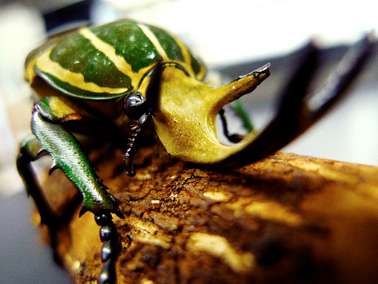Arthropod 'family tree' gets bigger through evolution studies

Would you be just as comfortable nibbling on a cricket or cockroach as you would be eating a crab?
While insects and crustaceans have long been considered by scientists to be separate branches of the arthropod "family tree," Arizona State University School of Life Sciences researcher and professor Jon Harrison reports that new findings, along with decades of genetic data, show they actually belong together.
In an article in the journal Science, author Elizabeth Pennisi writes that at an annual meeting of the Society for Integrative and Comparative Biology, Harrison and others reported there are "…new insights about what it took for an ancient aquatic crustacean to give rise to insects…" which now live on land. Harrison is an environmental physiologist who studies how insects function, interact with their environment and evolve.
The researchers discovered that two big changes had to occur in order for crustacean ancestors to become insects. The first change involved respiration, and the second involved compound eyes.
"When I think about traits in insects, I now have a context for where they came from. It's a total change," Harrison said in the article. He has been investigating the respiratory and metabolic aspects of insect physiology for decades.
More information: "All in the (bigger) family" Science 16 January 2015: Vol. 347 no. 6219 pp. 220-221 DOI: 10.1126/science.347.6219.220
Journal information: Science
Provided by Arizona State University
















